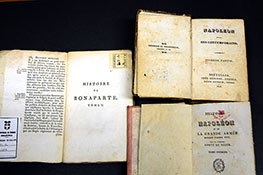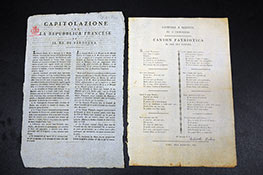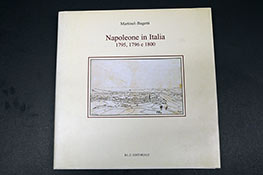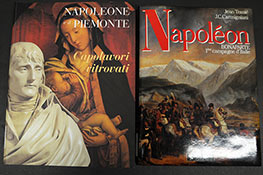Versione italiana English version Version française Versión en español
The 26th of June 1800 Napoleone Bonaparte, victorious from marengo battle, came in Turin to set up a temporary commission of government attaching Piedmont to France by a decree. Napoleone's first decision was to break down the doors and a great part of the city's bastions, preserving the citadel only. Turin from 1800 to 1814 was definetly a French city. Napoleone visited it three other times: his first trip to the city is dated 1797, when the general of the Armée d'Italie passed there while going to Paris after the treaty of Campoformio.
In 1805 Napoleone stayed in Stupinigi while going to Milan to be crowned King of Italy with his wife Giuseppina, and, in the end, already emperor of France, he passed in Turin in 1807, coming back from visiting the Veneto provinces he recently got. It was in that year that he signed the decree by which he authorized the municipality to build with his money a new bridge on the Po river, substituting the wood and stone one from 1405 damaged by a flood (The Gran Madre bridge, five arcs for 150 metres of lenght and almost 13 of width, begun in 1810 and finished in 1813, known as Vittorio Emanuele I bridge, because it was inaugurated by this king in 1814.
In the historical Library of Palazzo Cisterna can be found many texts and documents about Napoleone's presence in Turin: there are for example the volumes Histoire de Bonaparte (Paris 1805), Histoire de Napoléon et de la Grande Armée (Reycend, Turin 1831) and Napoléon devant ses contemporains (Bruxelles 1826), all belonging to the Giulio Fund. Between the modern pubblications there is the Napoleone in Italia1795, 1796 e 1800, including the translation of a manuscript preserved in the Royal Library, whose author, Joseph François Marie de Martinel, was official of the napoleonic army during the Italy campaigns. Martinel's notes are illustrated by a coeval drawer, Giuseppe Pietro Bagetti.
There is also the beautiful illustrated volume Napoléon Bonaparte. La prèmiere campagne d'ItalieI, by Tranié-Carmigniani (Paris 1990) and Napoleone e il Piemonte. Capolavori ritrovati, a cura di Bruno Cilento and Massimiliano Caldera, catalog of an exibition that took place in Alba in 2005, in which were exposed works belonging to great artists like Defendente Ferrari, Tanzio da Varallo, Bernardino Lanino, and stolen by Napoleone to the Piedmont territory in different steps.
Between the historical studies, there are the Torino napoleonica by Alberto Vigilio (Torino 1989), a reprint of the first edition from 1905) and Napoleone in Piemonte by Mauro Minola (L'Arcere, Droenero 2007). In the end, the papers can speak too: there is the Capitulation between the French Republic and the king of Sardinia, signed in Milan the 28th of June 1798, and, coming from Morselli Fund, the Campana a martel pr' i piemonteis, a revolutionary song by Edoardo Calvo printed in Turin the same year.




